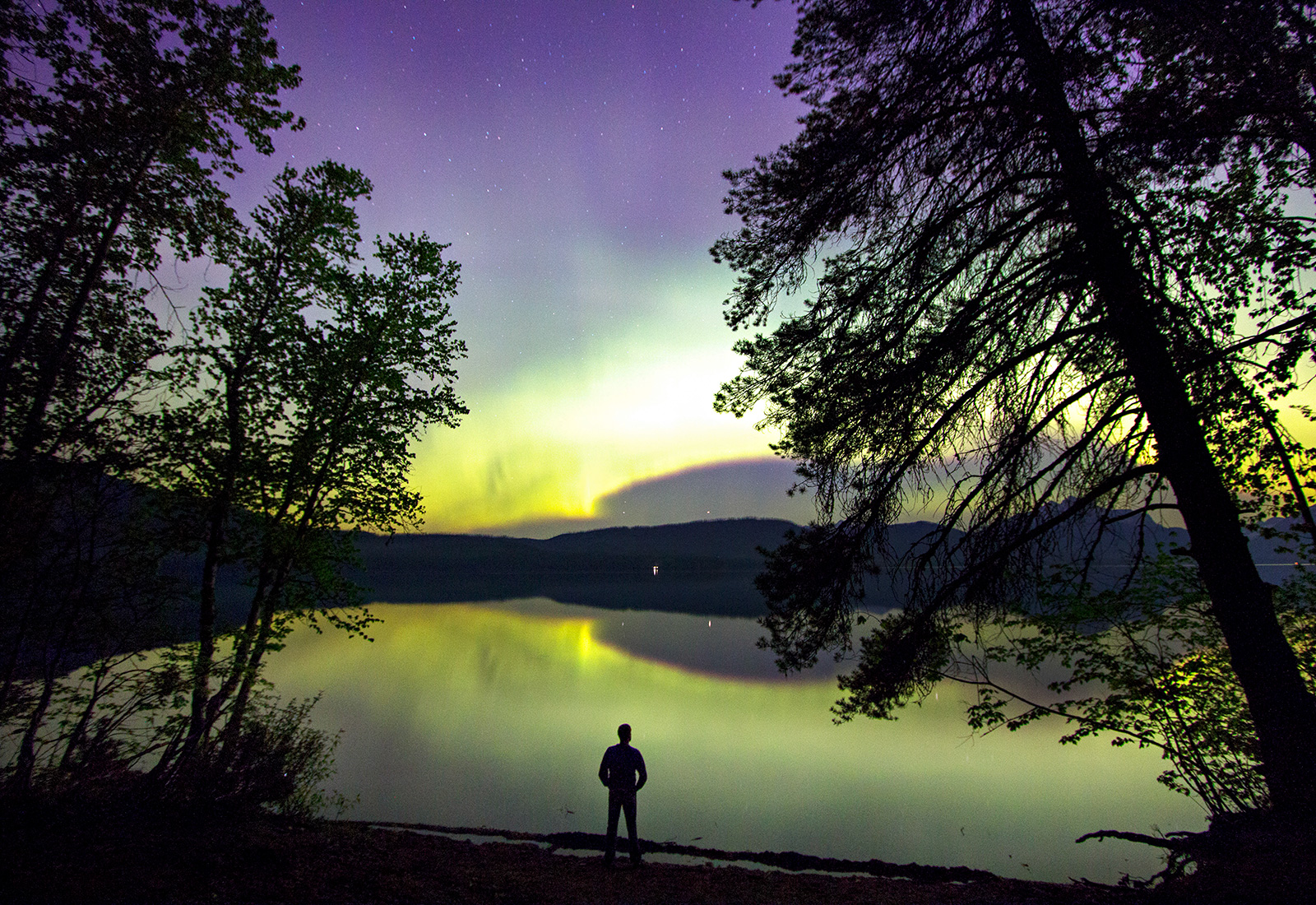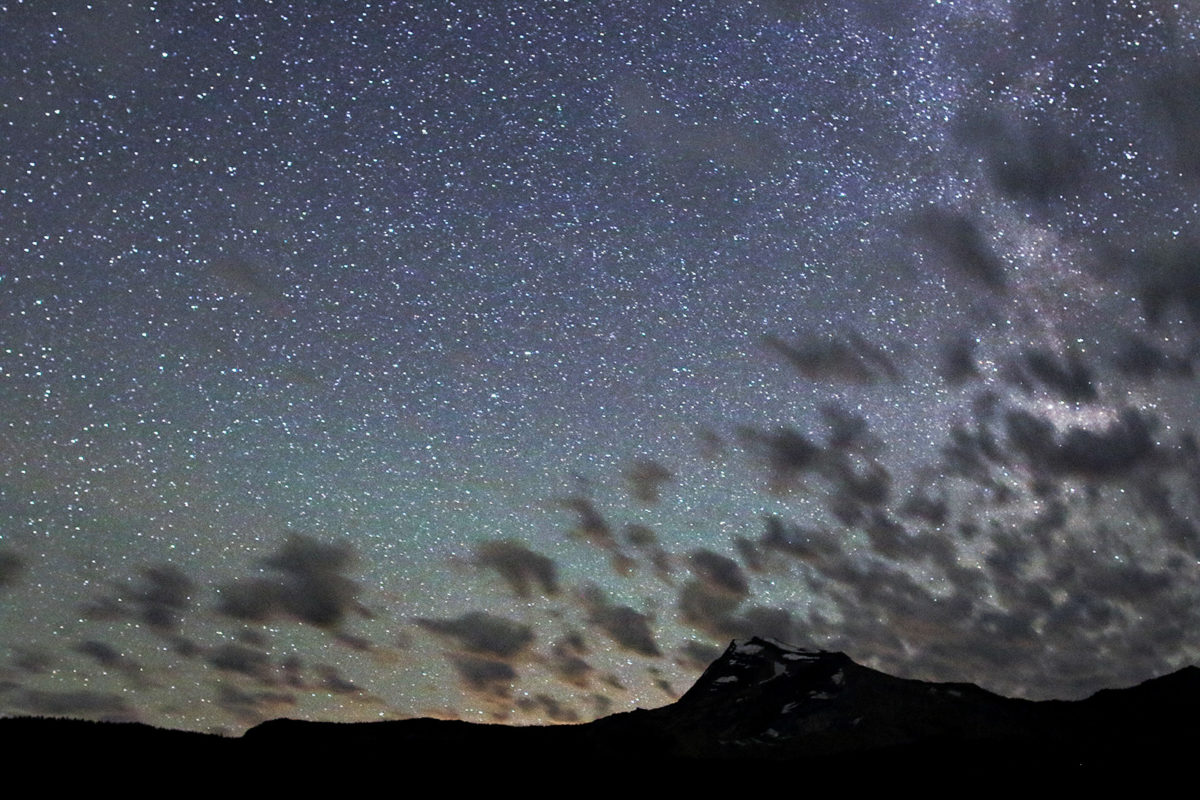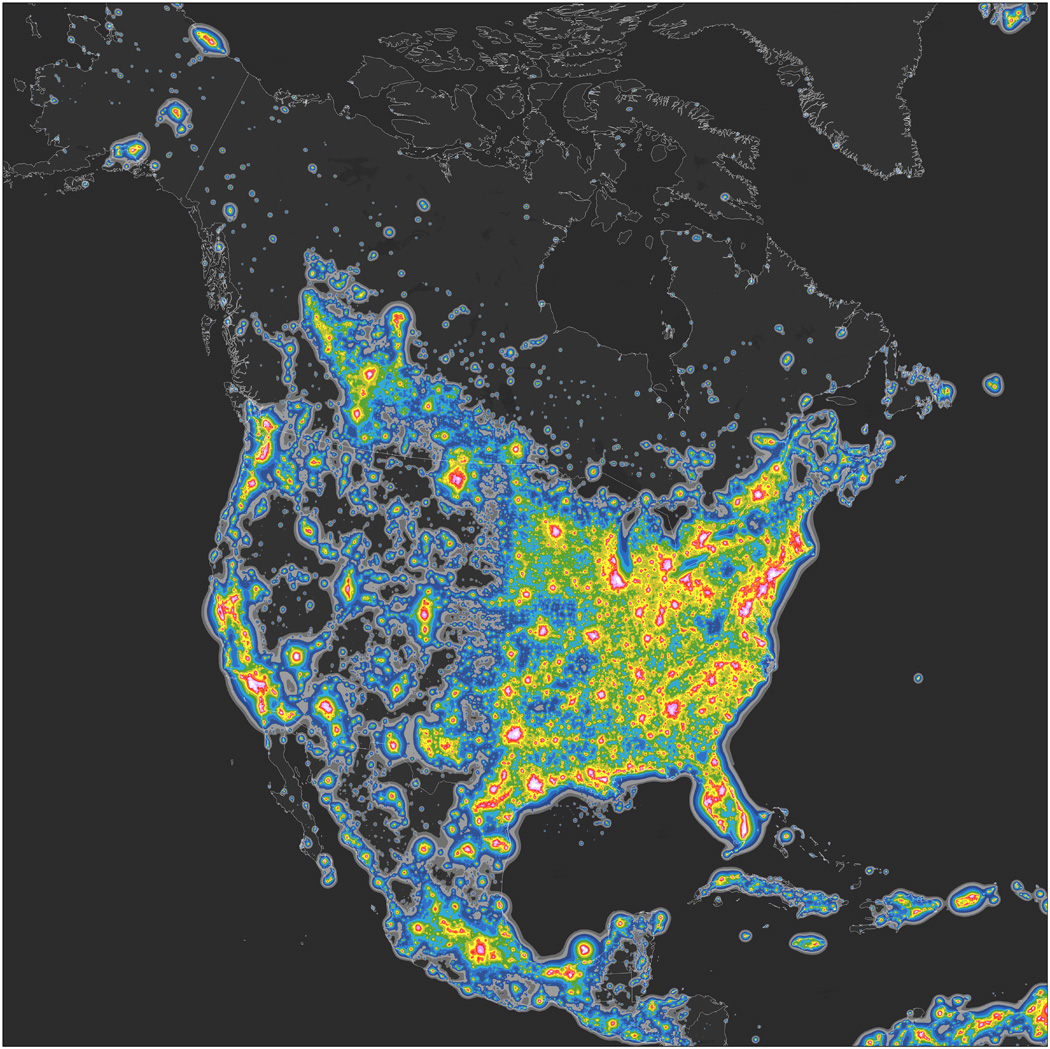
Star Light, Star Bright
Waterton-Glacier receives full certification as International Dark Sky Park just in time for one of the most stunning nighttime displays
Of the many dazzling displays of stellar luminance that grace the night skies each year (remember last year’s NEOWISE comet?), the Perseids meteor shower each August is one of the most exciting.
Under the best viewing conditions — a moonless night, clear skies and limited light pollution — Perseid-watchers can expect to see as many as 100 meteors streaking overhead each hour.
The meteor shower is visible from mid-July until the end of August, but it peaks as the Earth moves through the densest part of the Comet Swift-Tuttle debris field. This year, that peak occurred on Aug. 12, the same day Waterton Lakes National Park and Glacier National Park (GNP) achieved full certification as an International Dark Sky Park, joining more than 130 certified International Dark Sky Places around the world, and cementing itself as a near-perfect spot for viewing nighttime wonders such as the Perseids.
Waterton-Glacier International Dark Sky Park (IDSA) is the first transboundary IDSA in the world, adding to the shared parks’ joint designations that include International Peace Park, Biosphere Reserve and World Heritage Site.
“Dark night skies are an important wilderness characteristic at Glacier National Park. Clearly seeing the expanse of the universe increases a person’s sense of solitude well beyond that of the terrestrial landscape,” said GNP Acting Superintendent Pete Webster. “A Dark Skies designation aids International Peace Park visitors in finding their own wilderness solitude.”
The official designation from the International Dark Sky Association follows more than a decade of work between the two parks and partners like the Glacier National Park Conservancy, which has financially supported Glacier’s night sky education program, and the Big Sky Astronomy Club, which helped with the application process. The parks earned preliminary IDSP designation in 2017 .
Helping lead the pursuit of the dark sky designation was Iree Wheeler, a dark sky intern with Glacier in 2015 and 2016, who received the 2020 Dark Sky Defender Award for her efforts. Wheeler was tasked with compiling the necessary data for the application, which included taking measurements of nighttime luminance using a sky-quality meter throughout the parks.
According to Mark Biel, GNP’s natural resource program manager who spearheaded the process, most places within the park have an SQM rating of 21.5 to 21.8, just a few points below a perfect 22 for a moonless night with zero artificial light. For comparison, the SQM rating of an overly lit urban area would be in the mid-teens.
“This was not a simple one-page application,” Biel said of the decade-long effort (it was over 200 pages). “There was a lot of work that needed to be done.”

One part of the application required Wheeler to inventory every exterior light fixture in each park — Glacier alone has more than 2,000 — and draft a comprehensive plan to transition each light fixture to fit dark sky lighting requirements.
“Our club members put in the better part of two summers helping inventory all the existing lights in the park when we were in the application process,” Big Sky Astronomy Club President Mark Paulson said. “I’m just thrilled that our efforts were successful.”
Dark sky compliant lighting follows several principles, including using warmer color lights, targeting lights using shielding and careful aiming, and utilizing timers or motion detectors whenever possible. When Waterton-Glacier received the initial IDSP designation in 2017, only 29% of the parks’ lighting met the necessary standards. Now, more than 67% of park lighting is night-sky friendly.
According to park officials, new LED streetlights were installed in the West Glacier headquarters area and park residences received new dark sky-friendly fixtures and LED bulbs, or simply had the existing bulbs replaced. Light fixtures in East Glacier, St. Mary and Many Glacier will be replaced later this year.
“It all boils down to the park’s mission to protect the natural environment,” Paulson said. “Part of that natural environment is the night skies, even though people don’t normally think about that when they visit.”
In order to preserve and protect the remaining dark sites around the world, the International Dark Sky Association was founded in 2001 to help communities, parks and other protected areas to implement dark-sky protection practices. A 2016 study published in Science Advances found that nearly 80% of North America’s population can’t see the Milky Way at night due to pollution from artificial lights.

In order to keep the IDSP designation, Glacier and Waterton are required to maintain a robust educational program. During non-pandemic summers, Glacier hosts day and evening sky viewings that attract as many as 30,000 people annually.
The Big Sky Astronomy Club leads star parties at Logan Pass several times a year that draw hundreds of people, which Paulson is eager to resume.
In addition, Glacier Park and its nonprofit partner recently installed a night-sky webcam at Dusty Star Observatory, transporting far-flung visitors under the park’s start-studded skyscape on a nightly basis. For digital visitors who can’t stay awake that late, each morning the park posts a time-lapse video of the previous night’s sky camera, which records the moon, stars and Milky Way rising overhead, as well as clouds streaking past, lightning flashing inside thunder clouds and, during meteor showers, numerous streaking space rocks.
“Now the thrust has to be to limit the valley’s encroachment into that dark sky place in Glacier,” Paulson said, adding that he hopes the local communities will look to Glacier’s certification as inspiration. “We can kill two birds with one stone — protect Glacier National Park’s heritage and its dark skies while at the same time boosting the economy and tourism industry in the valley if we seriously pursue dark skies as another reason to visit.”
HOW TO WATCH THE PERSEIDS METEOR SHOWER
While the Perseids peak may have passed, meteors will still be visible in vast numbers for another 10 days or so.
The best viewing time is close to 3 a.m., although they can be spotted starting around 10 p.m. when the constellation Perseus, the focal point of the shower, begins rising in the northeast. According to NASA, “lie down or recline with your feet facing roughly towards the north, and look up.”